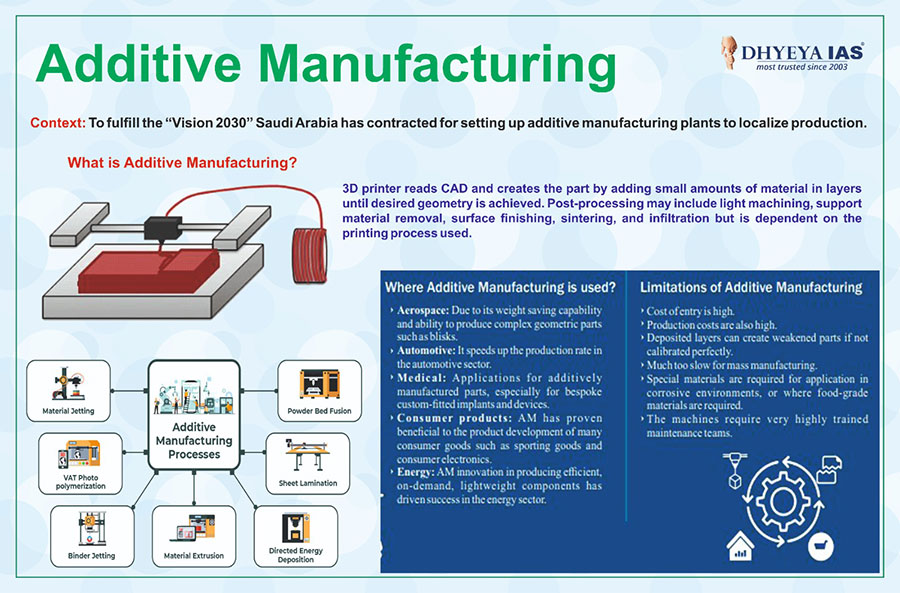
What is Additive Manufacturing?
3D printer reads CAD and creates the part by adding small amounts of material in layers until desired geometry is achieved. Post-processing may include light machining, support material removal, surface finishing, sintering, and infiltration but is dependent on the printing process used.
Additive Manufacturing Processes
- Material Jetting
- VAT Photo polymerization
- Powder Bed Fusion
- Sheet Lamination
- Binder Jetting
- Material Extrusion
- Directed Energy Deposition
Where Additive Manufacturing is used
- Aerospace: Due to its weight saving capability and ability to produce complex geometric parts such as blisks.
- Automotive: It speeds up the production rate in the automotive sector.
- Medical: Applications for additively manufactured parts, especially for bespoke custom-fitted implants and devices.
- Consumer products: AM has proven beneficial to the product development of many consumer goods such as sporting goods and consumer electronics.
- Energy: AM innovation in producing efficient, on-demand, lightweight components has driven success in the energy sector.
Limitations of Additive Manufacturing
- Cost of entry is high.
- Production costs are also high.
- Deposited layers can create weakened parts if not calibrated perfectly.
- Much too slow for mass manufacturing.
- Special materials are required for application in corrosive environments, or where food-grade materials are required.
- The machines require very highly trained maintenance teams.
